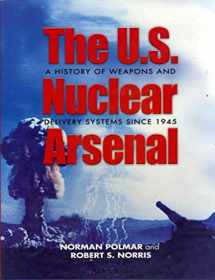
The U.S. Nuclear Arsenal: A History of Weapons and Delivery Systems since 1945
Book details
Summary
Description
The atomic bomb ended the war against Japan in 1945 and became the centerpiece of U.S. and Soviet military strategy for the next 45 years. In the late 1940s the debate over whether the atomic bomb was the ultimate arbitrator of international differences led to the infamous carrier-versus-B-36 controversy in American defense policy; American school children in the 1950s practiced "duck and cover" as we feared an atomic attack against American cities; and billions were spent to develop and procure vast fleets of B-36, B-47, and B-52 nuclear bombers, that led to a still-alive legacy that is seen in the current B-1 and the B-2 stealth bomber controversies. At the battlefield level the U.S. Army developed the 280-mm atomic cannon, atomic demolitions, and the infamous Davy Crockett atomic "grenade" launcher--the last intended to give battalion commanders their own nuclear arsenal. Similarly, the U.S. Navy entered the atomic world to obtain a carrier-based nuclear strike capability, to compete with the U.S. Air Force. Subsequently, a vast variety of naval weapons were developed, from the ASTOR nuclear torpedo to 16-inch nuclear projectiles for the four Iowa-class battleships. And, within the United States air-defense fighters carried aloft nuclear missiles and rockets, while nuclear-armed surface-to-air missiles ringed major U.S. cities and military bases. The U.S. nuclear arsenal peaked at some 31,500 warheads in the mid-1960s.


We would LOVE it if you could help us and other readers by reviewing the book
Book review



